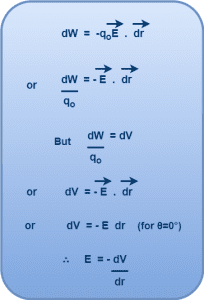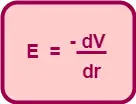Electric Potential-
Before you go through this article, make sure that you have gone through the previous article on Work Done In Moving Charge In Electric Field.
We have learnt-
- An external agent has to do some work against the electrostatic forces while moving a charge in an external electric field.
- The work done by an external agent in moving a charge qo from initial point ‘i’ to final point ‘f’ in an electric field is given by the formula-

In this article, we will learn the Relation Between Electric Field & Electric Potential.
Relation Between Electric Field & Electric Potential-
Consider-
- A positive point charge Q is fixed at a point.
- We wish to find the relation between electric field and electric potential.
- Another point charge qo is being moved by an external agent from point A to point B in the electric field of source charge Q.

Consider at any instant, the charge qo is present at some point P at a distance r from the source charge Q during its motion from A to B.
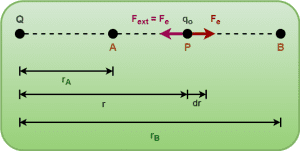
The work done by external agent in causing a small displacement dr from point P is given by-
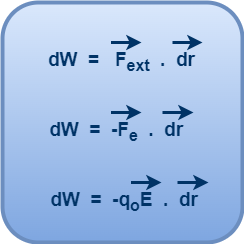
(Equation-01)
To calculate the total work done by the external agent in taking the charge qo from point A to point B, we integrate the above calculated small work done dW in Equation-01 as-
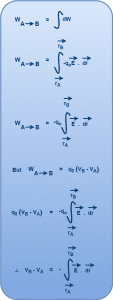
Thus, the relation between electric field and electric potential is given as-
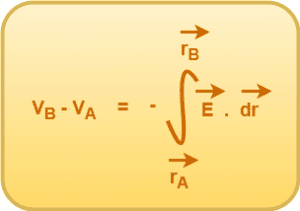
(Very Important)
Special Scenario-
If the electric field in a region is everywhere uniform, then the above general relation between electric field and electric potential can be written as-
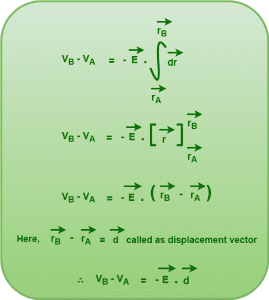
Thus, in a region of uniform electric field, on moving from point A to point B, the change in electric potential is given by-
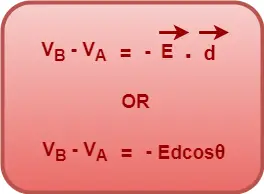
(Very Important)
Special Cases-
Case-01: When θ = 0°
On moving in the direction of electric field, the angle between electric field & displacement vector is 0°.
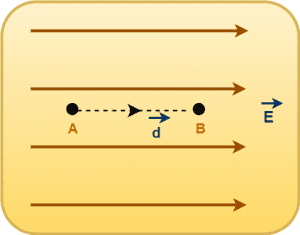
We have-
VB – VA = -Edcos0°
VB – VA = -Ed(1)
∴ VB – VA = -Ed
This shows that-
- On moving in the direction of electric field, the electric potential decreases.
- On moving a distance d, the electric potential decreases by the amount Ed.
Case-02: When θ = 180°
On moving in the opposite direction of electric field, the angle between electric field & displacement vector is 180°.
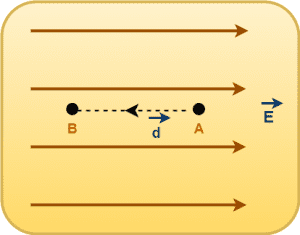
We have-
VB – VA = -Edcos180°
VB – VA = -Ed(-1)
∴ VB – VA = Ed
This shows that-
- On moving in the opposite direction of electric field, the electric potential increases.
- On moving a distance d, the electric potential increases by the amount Ed.
Case-03: When θ = 90°
On moving perpendicular to the direction of electric field, the angle between electric field & displacement vector is 90°.
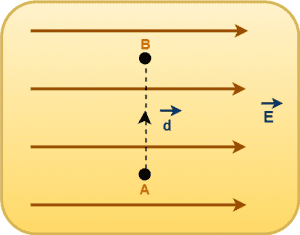
We have-
VB – VA = -Edcos90°
VB – VA = -Ed(0)
∴ VB – VA = 0
Or VB = VA
This shows that-
- On moving perpendicular to the direction of electric field, the electric potential remains constant.
- This gives rise to the concept of Equipotential Surface.
Another Important RelationE = -dV/dr
From Equation-01, we have-
From here, we conclude that- Electric Field is the negative of potential gradient which can be mathematically expressed as-
Here, negative sign shows that electric potential decreases in the direction of electric field. |
Read the next article on-
Electric Potential Due To Thin Infinitely Long Line Charge
Get more notes & other study material of the Chapter Electrostatic Potential & Capacitance.
